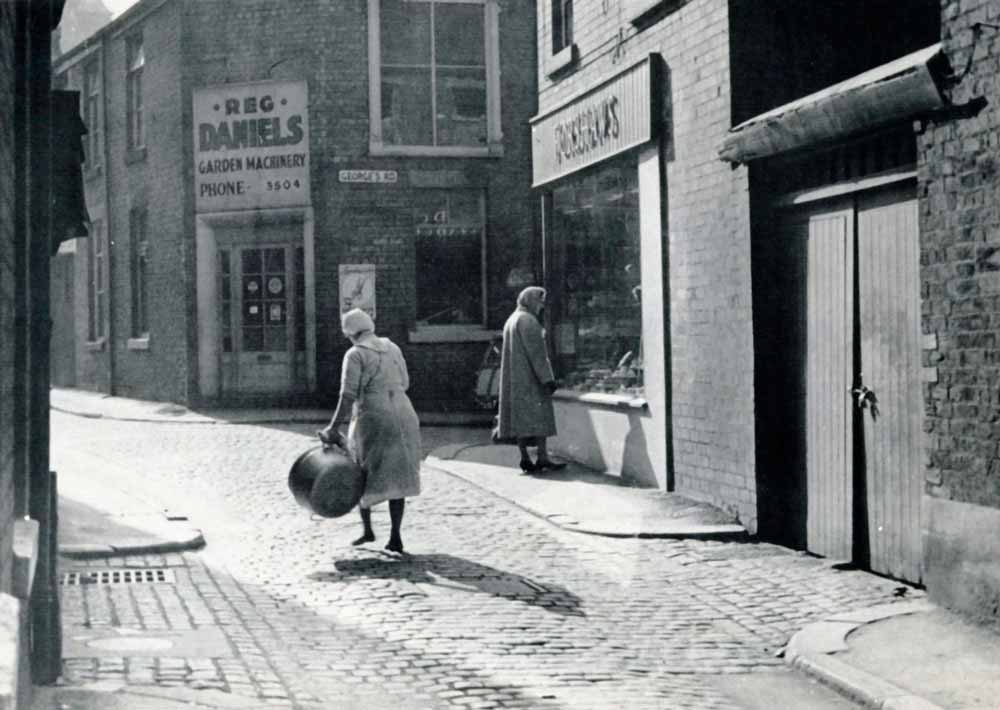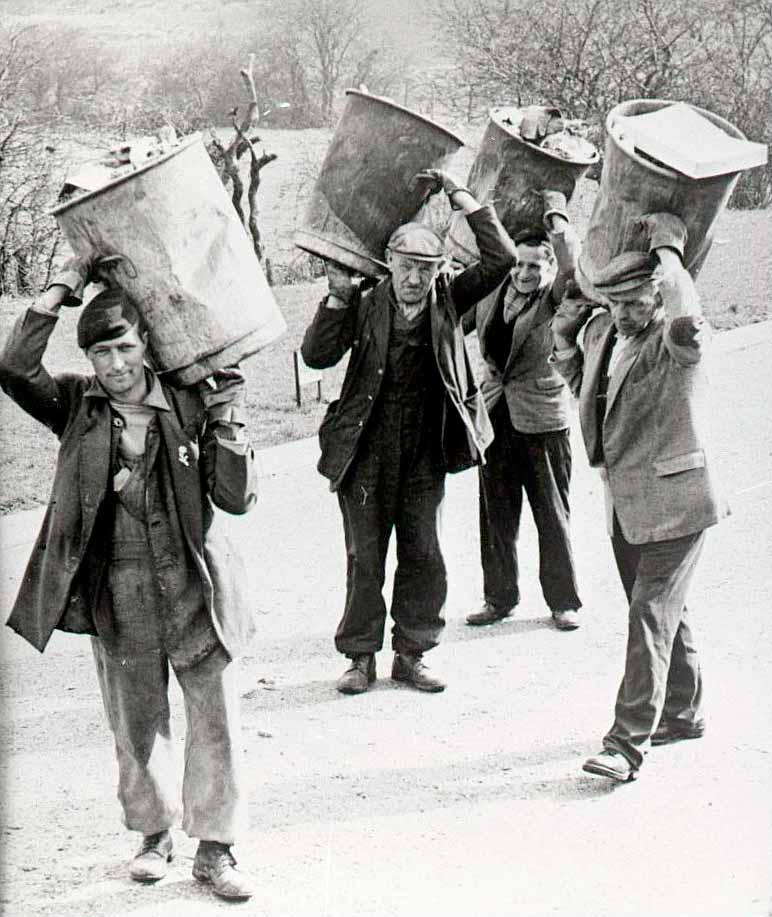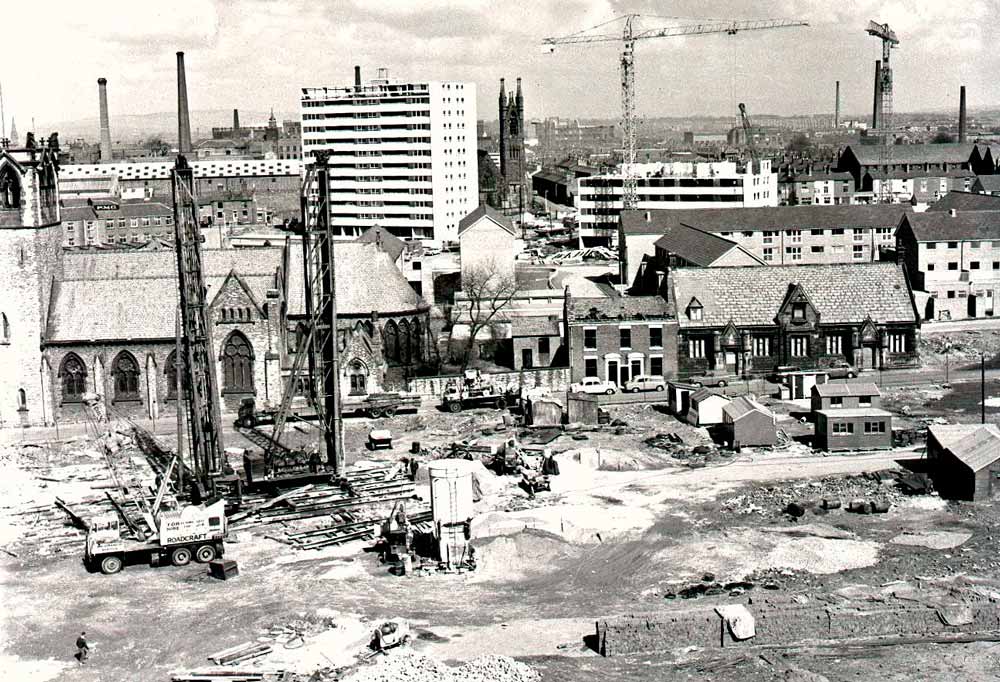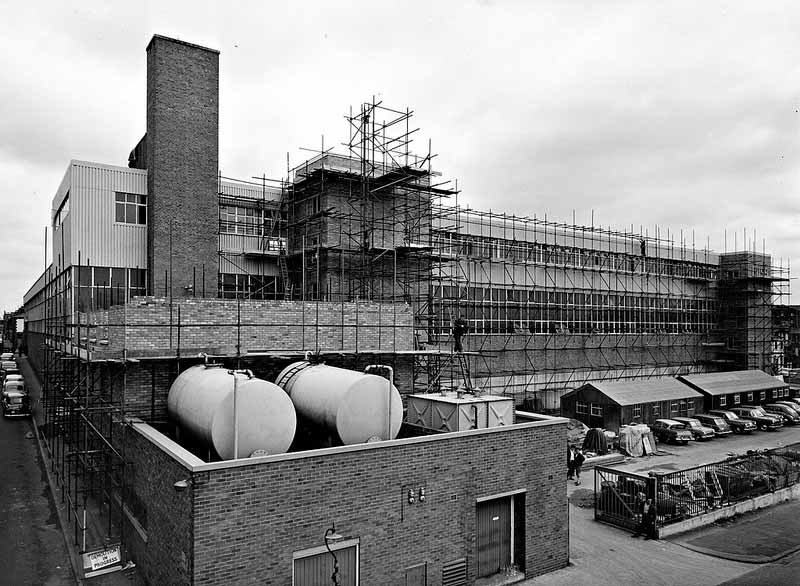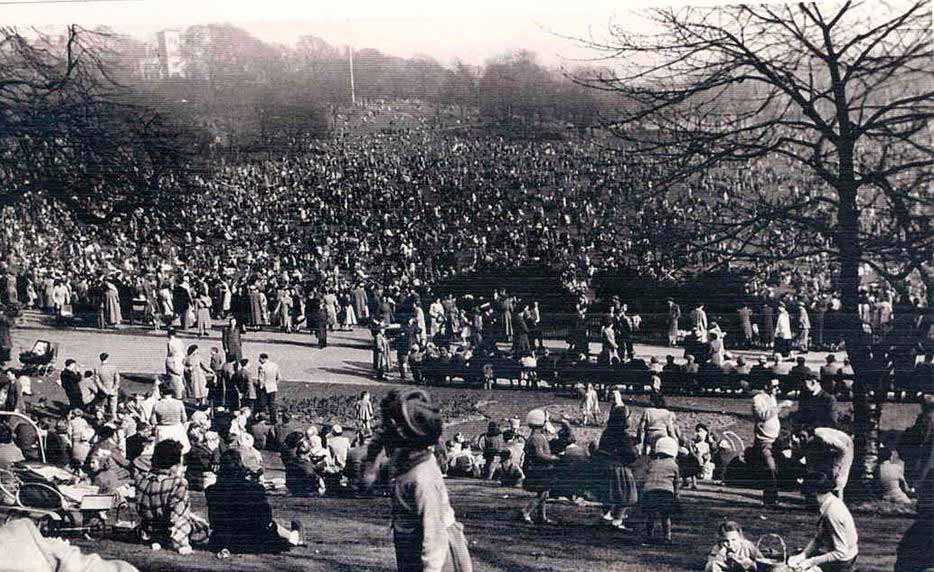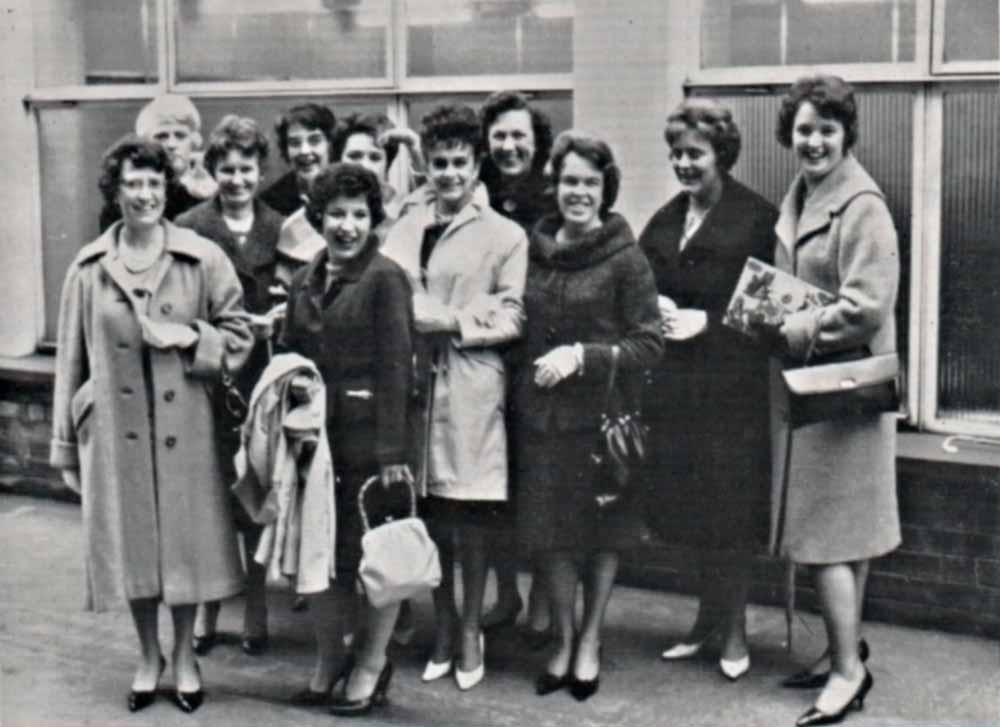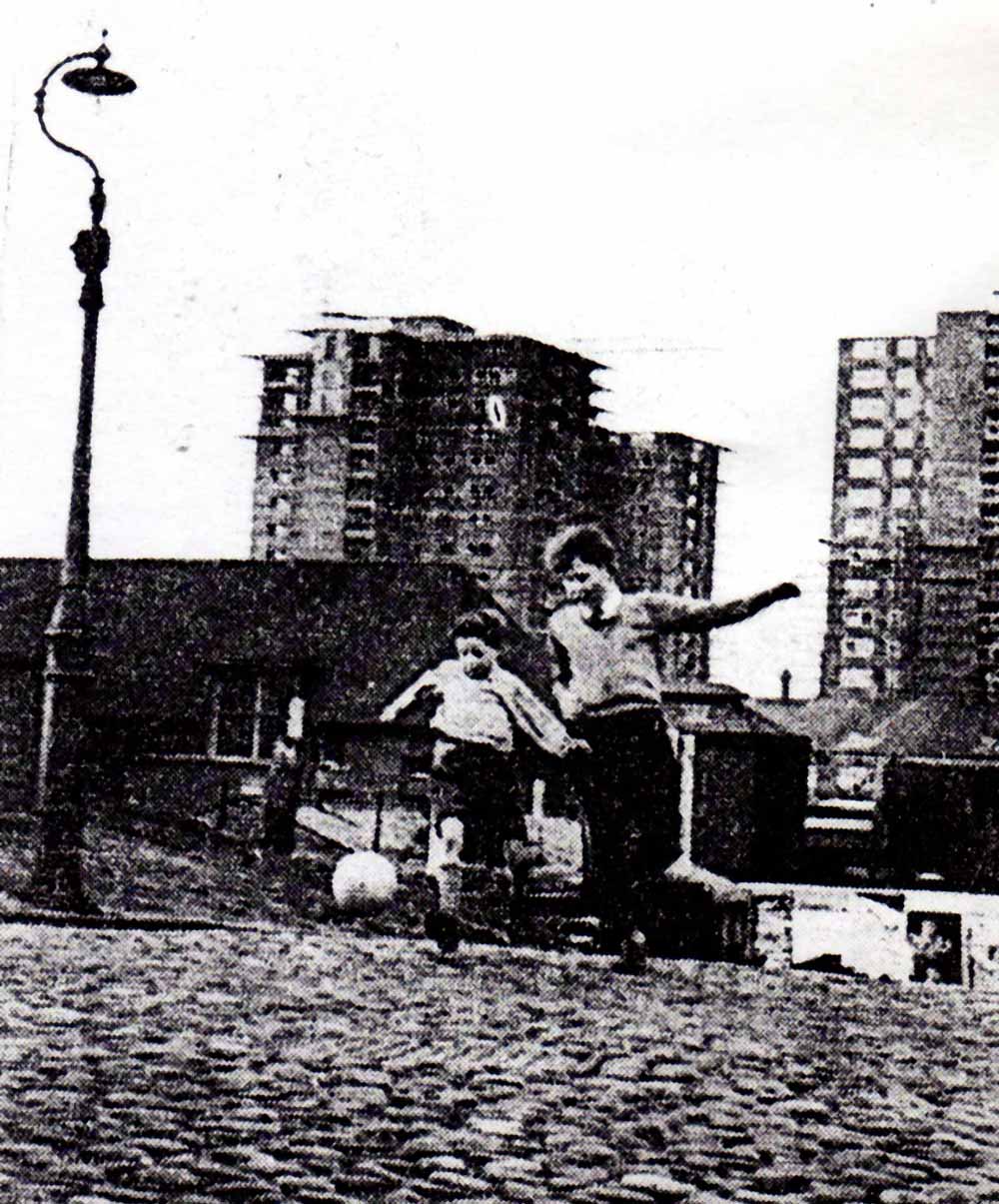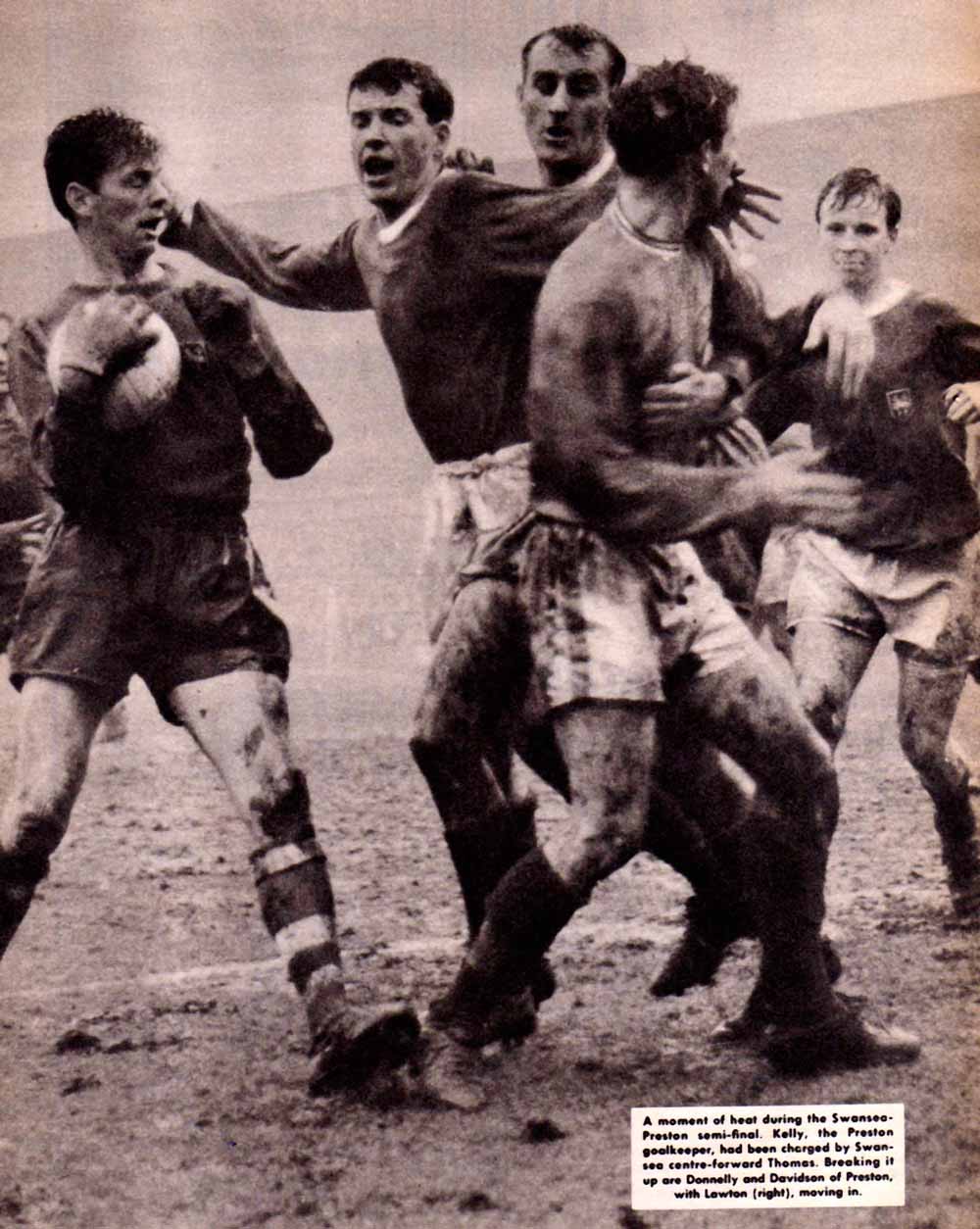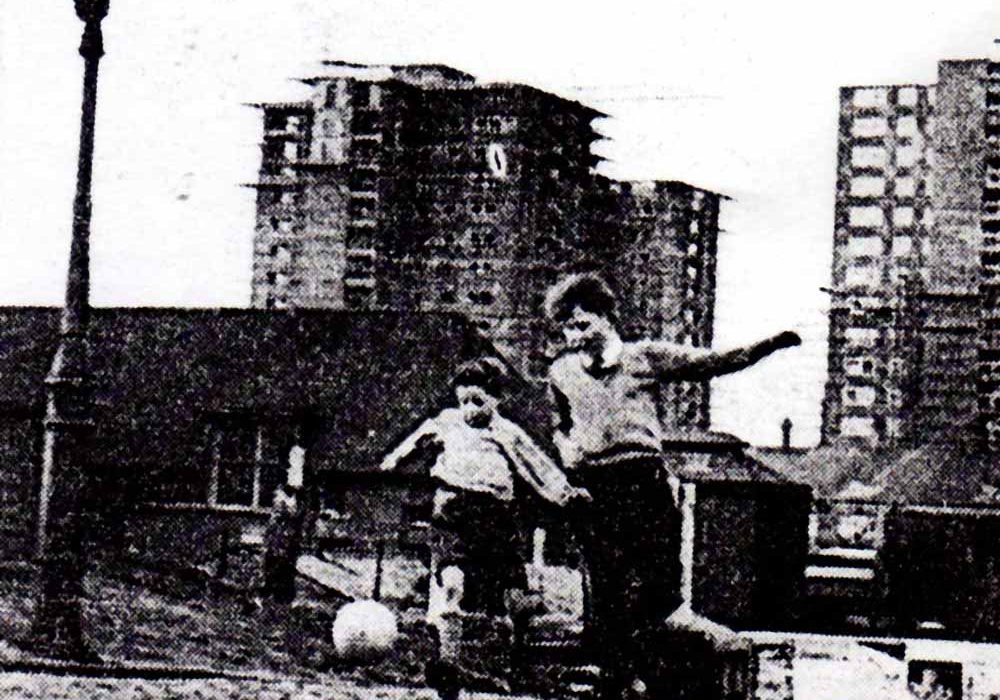
Preston’s Decade of Change
by Northern Life
The latest book written by local historian Keith Johnson takes an in-depth look at a decade that shaped Preston’s future.
Imagine a decade when tall towers and structures rose from the rubble of slum clearance with bulldozers, bricks and builders abounding, with one firm claiming to build a house in a day; a time when cobbled streets were making way for highways and a road was coming that would split Friargate in two.
A period when churches and chapels of all denominations seemed to be enjoying a heyday with congregations full of enthusiastic worshippers; the Roman Catholics, the Church of England and the Methodists all going their separate ways, but being united in progress.
School days also were changing. The old and decaying church schools were beginning to make way for the Secondary Modern and all the advances in reading, writing and arithmetic, plus the odd foreign language thrown in.
With employment levels high, working hours shorter and younger people with more of a disposable income, a leisure industry was beginning to thrive. The days when television sets had become the norm in most households, although generally they were only rented and the pictures were in black and white.
The cinemas had started to feel a decline in audiences, although Preston still had a number of town centre auditoriums for the film fans. Bingo halls and betting shops were beginning to take their place among the leisure activities as gambling rules changed. These were also the days of teenage dreamers who wanted to look fashionable, record shops selling hit parade vinyl records, coffee bars, discotheques, youth clubs and those mods and rockers. And for the more mature there were still the dance halls for more of a strictly ballroom way of dancing and many still enjoyed a visit to
the theatre.
- The tallest in town on Moor Lane
- Preston Grasshoppers celebrated their centenary
- Bambers Yard bowed out
- The dustbin men before wheelie bins
- Tom Finney bade farewell to PNE
- Woolworths always attracted the Christmas shoppers
- A building boom was underway in Avenham
Public houses were as popular as ever, despite some of the older inns and many of those on terrace street corners being swept away in the name of progress. No longer were Ribbleton Lane, North Road and New Hall Lane roads of endless public houses. Tragically, there is one tale to tell of the collapse of a public house where regulars gathered on a November afternoon in 1960, leading to devastation and death.
It was a decade that saw the world of high street shopping and commerce begin to change. Preston was no exception in that respect with proprietors of Friargate, Fishergate and Church Street all bowing to progress. The town’s shops half-day closing on a Thursday was under threat, although Sunday opening was still a generation away. Mums had proper shopping baskets, not plastic carrier bags, and in many a premises it was not self service, with shopkeepers happy to weigh and measure your purchase be it butter, lard or treacle toffee. That was all about to change.
Preston likes to do things politically correct and the 1960s were no exception. Excitement at the Preston ballot box drew national attention and leading politicians came canvassing for votes. The battle for the Preston North and Preston South constituencies were nailbiting affairs. In some ways it was much simpler then with the just Tories or Labour to choose from, besides the odd Independent who threw their hat into the local election arena. It was a decade when the local political parties flexed their muscles and the politicians of Preston made crucial decisions that would shape the town for generations to come.
In the 1960s the people of Preston had a great passion for sport. Youngsters were brought up enjoying kicking a football or playing cricket or rounders on the cobbled streets or the parks. Swimming, tennis, basketball, rugby, golf, crown green bowling all flourished in days when many rode their bicycle to work for exercise. To many the phrase ‘football crazy, football mad’ was most
applicable. The passion for Preston North End was strong although it was a decade of more downs than ups, having started the period in the top flight of the Football League. Nonetheless, they had their moments of glory and throughout the decade the ‘Last Football’ Post kept you up to date with match reports on the action.
It was a decade when the Preston Borough Police force would eventually hand over control to the Lancashire Constabulary. It meant a last goodbye for the Chief Constable of Preston. Sadly, there were those with murder in mind who shocked local folk with their criminal activity. The killing of a pub landlady, the slaughter of a pregnant wife and the hanging of two former Preston dairymen were among the tragedies of the decade. Preston Prison was once more a useful institution after decades of decline and over 700 prisoners were kept within its walls.
“Run and get the fire brigade” was all too often the cry and Preston Fire Brigade certainly went to blazes in the 1960s. They had begun the decade on Tithebarn Street, but that would change. Besides the numerous blazes on street corners on Bonfire Night there were many more challenging fires to dampen down; a ten pin bowling alley and a fashion store among them.
- Harold Wilson came to town in 1964
- Steam trains were on their final journeys
- High rise flats began to emerge
- The Port of Preston was thriving
- Goss the Printing Press manufacturers were expanding
- Easter on Avenham with 40,000 visitors in 1960
- Fishergate circa 1969
A fondly remembered Easter was that of 1960 with hot cross buns, stations of the cross, rambles in the countryside, egg rolling on Avenham Park, football at Deepdale, greyhound racing, railway excursions and the inevitable traffic jams. On the Avenham and Miller Parks, it seemed that the national ‘Keep Britain Tidy’ campaign was paying dividends. The Parks Department staff commented that although up to 40,000 had been out egg rolling, the litter was only half as much as previously.
Throughout the decade Preston was still clinging to the old Whitsuntide traditions. The Market Square and Covered Market both hosted the annual fair with candyfloss, parched peas, coconut shies, stalls bedecked with toys, and swings and roundabouts aplenty. It seems that life was just like a merry-goround with all the fun of the fair, and a chance to win a goldfish.
“Santa Claus is coming to town” was the cry ever December leading to a decade of Christmases that brought families together to share the happiness and holiness of the season. The patients in hospital, the orphans and the homeless all benefited from the festive spirit. Institutions were bedecked with Christmas trees and decorations, visited by church choirs and the inmates fed with plump turkeys. Even those detained in Preston Prison, at Her Majesty’s Pleasure, had carol singing, concerts and Christmas pudding to enjoy.
As for winter, a look back to 1963 is sure to leave you feeling the chill. Frozen pipes, icy roads and frostbitten fields. Christmas 1962 had arrived with freezing fog, a sprinkling of snow and temperatures below freezing in Preston. In the months ahead it was burst water mains, blizzards, frozen ponds and even a frozen Lancaster Canal.
- The PNE team started the decade in the top flight. Left to right: (Back ro) F. O’Farrell, W. Cunningham, J. Dunn, F. Else, J. Walton, J. Smith, J. O’Neill; (Front row) D. Mayers, T. Thompson, T. Finney, D. Hatsell, D. Sneddon, S. Taylor
- A trip out for the GOSS secretaries 1962
- Preston Fire Brigade were in action
- The Co-op celebrated their centenary in 1963 in style
- Cobbled street football popular as ever
- FA Cup Semi Final action in 1964 for North End
- Tom Finney boots for Christmas in 1960
As the decade moved towards the close it seemed apt to pay a visit to Preston on moon landing day. The tradition Wakes Week fortnight had left the town deserted and it seemed as though everyone had gone to the moon. One Preston man was celebrating after his wager on man landing on the moon before the decade was out paying off.
Back on planet Earth there had been a walkout by workers on Preston Dock, and Courtaulds had just ended an overtime ban. Industry was thriving with booming exports announced by the British Aircraft Corporation and at Leyland Motors things were going well with £1m worth of orders secured.
In the years that followed, the decade was described as the Sensational, the Savage, the Swinging, the Saucy and even the Sexy Sixties, and it left the townsfolk with memories that would linger for a life time.
On reflection the decade seems to have started with a grey / black white appearance and ended in glorious Technicolor much like our television sets. Certainly the views had become more panoramic and the building boom that followed the post war baby boom meant the town of Preston was becoming a city in waiting.
In truth the depth of information within the pages of this book is only possible thanks to those reporters, journalists and photographers of the Lancashire Evening Post who chronicled a decade in the life of our town.
Preston in the 1960s: Ten Years that Changed a City, by Keith Johnson, £14.99, www.amberleybooks.com



